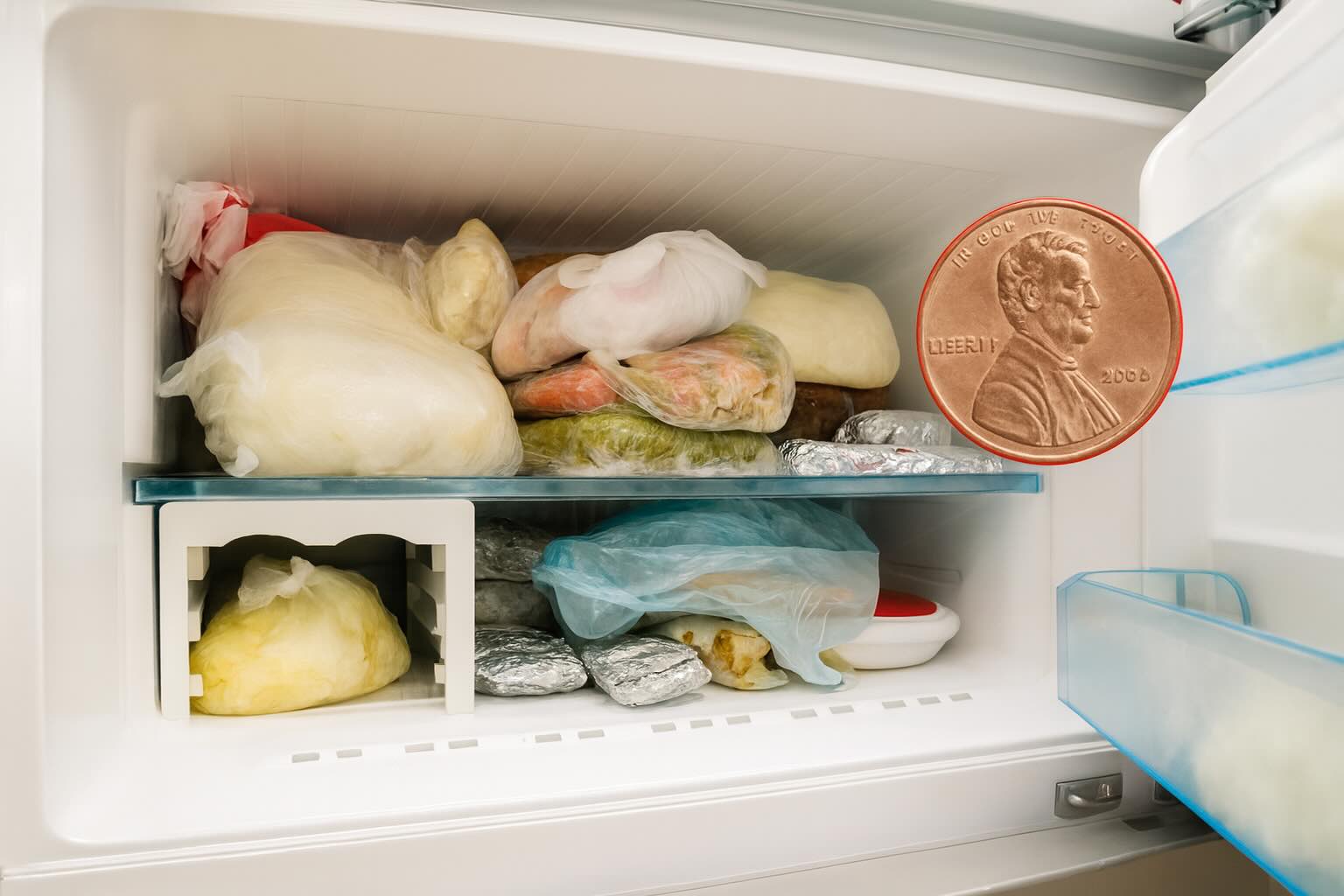The freezer is one of the hardest-working appliances in American homes. From preserving leftovers to storing bulk groceries, it plays a key role in keeping food safe. But what many people don’t realize is that a simple coin can act as a silent guardian of food safety. This easy trick has gone viral for good reason — it helps you avoid eating spoiled food after a trip away.
Most households rely heavily on frozen goods, from raw meats to ready-made meals. When your freezer works properly, it keeps food at temperatures low enough to stop bacteria from multiplying. The problem comes during power outages or mechanical breakdowns, when food can thaw and refreeze without showing visible signs. This creates a hidden danger: consuming thawed and refrozen items raises the risk of foodborne illness.
Foods like hummus, dairy, seafood, and raw meat are especially vulnerable. If their temperature fluctuates, harmful bacteria can grow. And when you’re away from home, there’s no way to know whether your freezer stayed cold enough the entire time. That’s where the coin trick comes in.
The freezer coin test explained
The coin-in-freezer test is simple, quick, and highly effective. All you need is a cup of water, a freezer, and a coin. Here’s how to do it:
-
Fill a small container halfway with water.
-
Freeze it until the water is solid.
-
Place a coin on top of the ice.
-
Leave the container in your freezer while you’re gone.
-
Check the coin’s position when you return.
If the coin is still resting on top, your freezer never warmed up. But if the coin has sunk to the middle or bottom, that means the ice melted and refroze — a clear sign your food was exposed to unsafe temperatures.
The beauty of this test is that it works even if the power comes back before you get home. While your freezer might look normal, the coin tells the real story of what happened during your absence.
Interpreting results and taking appropriate action
The coin’s position gives you valuable clues about food safety:
-
Coin on top → Freezer stayed cold the whole time. Food is safe to keep.
-
Coin slightly sunken → A brief thaw occurred. Check food carefully. Vegetables may be fine, but raw proteins should be treated with caution.
-
Coin at the bottom → A full thaw and refreeze cycle happened. Most items — especially meat, seafood, dairy, and cooked meals — should be discarded.
By following this method, you can prevent serious digestive issues or worse. Many people have adopted the coin trick after experiencing food poisoning caused by spoiled frozen foods.
Additional benefits of monitoring freezer performance
This trick isn’t only about food safety — it can also highlight problems with your freezer. If you notice the coin sinking often, it may be time for maintenance or repairs. Addressing these issues early saves energy, protects your groceries, and extends your freezer’s lifespan.
Smart freezer management practices
To get the most from your freezer, combine the coin trick with smart storage habits:
-
Keep an inventory: Note what you freeze and when, so nothing sits forgotten for months.
-
Label items: Mark containers with contents and freeze dates for easy tracking.
-
Maintain the right temperature: Set your freezer to 0°F (-18°C).
-
Perform routine upkeep: Defrost when ice builds up beyond 1/4 inch and check seals yearly.
-
Store sensitive items wisely: Place valuable or delicate foods in the freezer’s center, where temperatures are most stable.
These small steps ensure your freezer runs efficiently while keeping your food safe and fresh.
The coin-in-freezer trick is proof that simple solutions can solve big problems. It’s quick, free, and highly effective at protecting your food from hidden spoilage during power outages or trips away. Pair it with good freezer habits, and you’ll always come home confident that your meals are safe to enjoy.
